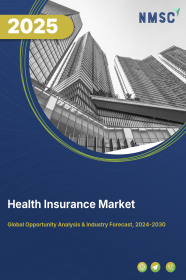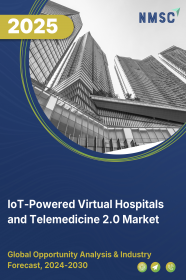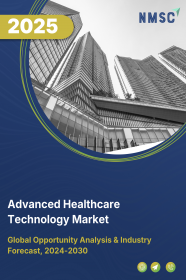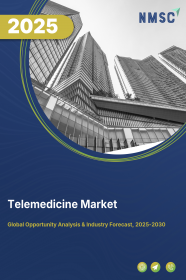
Health Insurance Market by Service Provider (Private Insurance Companies, Public/Government, and Health Insurance Programs), by Policy Type (Individual Health Insurance, Family Health Insurance, Group Health Insurance, Senior Citizens Health Insurance, Maternity Health Insurance, and Disease-Specific Health Insurance) and Others– Global Opportunity Analysis and Industry Forecast, 2024–2030
US Tariff Impact on Health Insurance Market
Trump Tariffs Are Reshaping Global Business
Market Definition:
The global Health Insurance Market size was valued at USD 2,476 billion in 2023, and is predicted to reach USD 3,974 billion by 2030, with a CAGR of 7.0% from 2024 to 2030. Health insurance is a financial agreement between an insurance provider and a policy holder that covers medical expenses in return for a premium paid for a tenure. It provides a range of health plan choices as well as information that assists consumers in understanding their choices and applying for insurance. There is no upper or lower age limit for its coverage; hence, it can be purchased for an individual or family.
Health insurance provides benefits such as cashless treatment and tax deductions in countries such as India, Germany, and the U.S. It also covers hospitalization expenses, accidental injuries, illness, and others. Thus, its purpose is to ease the financial burden of healthcare expenses, which are increasing due to growing medical costs, and ensure access to necessary medical treatment.
Market Dynamic and Trends
The growing number of chronic diseases such as arthritis, diabetes, heart disease, and others in the elderly population is creating a demand for health insurance. For instance, in January 2023, ManipalCigna Health Insurance launched a special health policy for senior citizens called “ManipalCigna Prime Senior.” The policy covers pre-existing diseases, preventive health check-ups, cashless hospitalization, critical illness, and efficient and quick healthcare access.
Additionally, the rise in healthcare expenditure with increasing health awareness among individuals is propelling the growth of the health insurance market. A report published in December 2022 by the World Health Organization (WHO) highlighted a noticeable upward trajectory in worldwide healthcare spending, reaching approximately USD 9 trillion, which is equivalent to 11% of the global GDP. This suggests a potential expansion in the health insurance market.
Also, the rising government investments in healthcare and the introduction of new policies and programs to improve public health further contribute to the market expansion. According to the National Institutes of Health report published in March 2023, the Government of India initiated new health policies and increased the healthcare budget by 137% in 2021. This initiative taken by the Indian government was to ensure proper treatment in the country and improve healthcare facilities.
For instance, in January 2021, the U.K. introduced a new Global Health Insurance Card that replaces the European Health Insurance Card, enabling the U.K. citizens to access emergency and medically necessary healthcare services while traveling in the European Union (EU).
However, the increase in premium payments charged by providers to policyholders is restraining the growth of the health insurance market. On the contrary, the adoption of artificial intelligence (AI) is creating ample opportunities in the coming years, as it will help customers by proposing the best policies based on the insurer’s data profile and easing premium calculations. It will also evaluate the risks to protect insurers from losses and cashless claims, indicating that AI will develop the health insurance sector in the coming years.
For instance, in September 2023, Aditya Birla Sun Life Insurance incorporated AI technology “AUSIS,” developed by Arthivatic.ai. This combines traditional processes of evaluating risks with modern algorithms to provide the insurer with the ability to make quick and informed underwriting decisions.
Market Segmentations and Scope of the Study
The health insurance market share is segmented into service provider, policy type, network provider, age group, coverage duration, end user, distribution channel, and geography. Based on service providers, the market is classified into private providers and public/government and health insurance programs. Based on policy type, the market is divided into individual health insurance, family health insurance, group health insurance, senior citizens health insurance, maternity health insurance, and disease-specific health insurance.
Based on network provider, the market is segmented into health maintenance organization, preferred provider organization, exclusive provider organization, and point of service. Based on age group, the market is segmented into minor/children, adults, and senior citizens. Based on coverage duration, the market is bifurcated into term health insurance and whole life insurance with health benefits.
Based on end-users, the market is divided into individual policyholders, families and households, employer-sponsored group plans, and government-sponsored programs. Based on the distribution of channels, the market is segmented into direct sales, insurance brokers/agents, banks and financial institutions, and online platforms. The regional breakdown and analysis of each of the aforesaid segments includes regions such as North America, Europe, Asia-Pacific, and the Rest of the World (RoW).
Geographical Analysis
North American region holds the dominant share of the health insurance market, due to rising health consciousness in this region. As outlined in the April 2023 report from KFF.org, Medicaid health insurance enrollment experienced a significant increase, surging from 21.1 million individuals in 2020 to a substantial 92.3 million in 2022. This growth can be attributed to heightened healthcare consciousness and the impact of the COVID-19 pandemic.
Additionally, an increase in healthcare expenditure by the government is driving the health insurance market. For instance, the United States grew spending on healthcare by 2.7% in 2021, reaching USD 4.3 trillion, or USD 12,914 per person. This factor is driving the growth of the health insurance market in the region.
On the other hand, Asia-Pacific is showing the fastest growth in the health insurance market, due to a rapid increase in the geriatric population in this region. According to a report published by the Population Reference Bureau in June 2023, it is stated that Japan is experiencing a swift demographic shift, with a substantial 28% of its total population constituting of elderly individuals.
Moreover, the increasing government efforts to enhance the accessibility and affordability of health insurance for the general population are playing a pivotal role in driving the market expansion. For instance, in June 2022, the Insurance Regulatory and Development Authority of India (IRDAI) extended the 'Use and File' procedure for all health insurance products, providing customers with innovative insurance options without waiting for them for longer periods. Thus, the expansion of procedures such as ‘Use and File’ allows customers to get innovative policies from the insurers, leading to the growth of the market.
Competitive Landscape
Various market players operating in the health insurance market include Aetna, Inc., AIA Group Limited, Allianz, Assicurazioni Generali S.p.A., Aviva Plc, AXA, Cigna, Ping An Insurance (Group) Company of China Ltd., UnitedHealth Group, Zurich, and others. These market players opt for various business strategies, such as collaboration and product launches across various regions, to maintain their dominance in the health insurance market.
For instance, in May 2023, Zurich launched “Zurich Evolve,” a dedicated initiative aimed at safeguarding the health and overall well-being of its customers throughout their entire life journey. The program offers preventive checks, specialized support, and rehabilitation programs for various health issues, including cancer management, pain management, fatigue, exercise, and mental health.
In addition, in March 2023, Ping An Insurance (Group) Company of China Ltd. partnered with Huize Holding Ltd. to launch a medical insurance product called ‘Chang Xiang An.’ It provides a long-term protection to the entire household through guaranteed policy renewals for 20 years. Hence, collaborations of companies to develop new policies lead the health insurance market growth.
Moreover, in October 2021, United Health Group Company introduced a virtual first health plan called “NavigateNOW.” The program allows United Healthcare members access to various services, including wellness, routine, managing chronic illnesses, and urgent and mental health treatments. Thus, such approaches and plans adopted by the companies are increasing the growth of the health insurance market.
Key Benefits
-
The report provides a quantitative analysis and estimations of the health insurance market from 2024 to 2030, which assists in identifying the prevailing market opportunities.
-
The study comprises a deep-dive analysis of the current and future health insurance market trends to depict prevalent investment pockets in the market.
-
Information related to key drivers, restraints, and opportunities and their impact on the health insurance market is provided in the report.
-
A competitive analysis of the players, along with their market share is provided in the report.
-
A SWOT analysis and Porter's Five Forces model are elaborated on in the study.
-
Value chain analysis in the market study provides a clear picture of the stakeholders' roles.
Health Insurance Market Key Segments
By Service Provider
-
Private Insurance Companies
-
Public/Government Health Insurance Programs
By Policy Type
-
Individual Health Insurance
-
Family Health Insurance
-
Group Health Insurance
-
Senior Citizens Health Insurance
-
Maternity Health Insurance
-
Disease-Specific Health Insurance
By Network Provider
-
Health Maintenance Organization (HMO)
-
Preferred Provider Organization (PPO)
-
Exclusive Provider Organization (EPO)
-
Point of Service (POS)
By Age Group
-
Children/Minors
-
Adults
-
Senior Citizens
By Coverage Duration
-
Term Health Insurance
-
Whole Life Insurance with Health Benefits
By End User
-
Individual Policyholders
-
Families and Households
-
Employer-Sponsored Group Plans
-
Government-Sponsored Programs
By Distribution Channel
-
Direct Sales
-
Insurance Brokers/Agents
-
Banks and Financial Institutions
-
Online Platforms
By Region
-
North America
-
The U.S.
-
Canada
-
Mexico
-
-
Europe
-
The UK
-
Germany
-
France
-
Italy
-
Spain
-
Denmark
-
Netherlands
-
Finland
-
Sweden
-
Norway
-
Russia
-
Rest of Europe
-
-
Asia-Pacific
-
China
-
Japan
-
India
-
South Korea
-
Australia
-
Indonesia
-
Singapore
-
Taiwan
-
Thailand
-
Rest of Asia-Pacific
-
-
Rest of the World (RoW)
-
Latin America
-
Middle East
-
Africa
-
Key Players
-
Aetna Inc.
-
AIA Group Limited
-
Allianz
-
Assicurazioni Generali S.p.A.
-
Aviva plc
-
AXA
-
Cigna
-
Ping An Insurance (Group) Company of China Ltd.
-
UnitedHealth Group
-
Zurich
REPORT SCOPE AND SEGMENTATION:
|
Parameters |
Details |
|
Market Size in 2023 |
USD 2,476 billion |
|
Revenue Forecast in 2030 |
USD 3,974 billion |
|
Growth Rate |
CAGR of 7.0% from 2024 to 2030 |
|
Analysis Period |
2023–2030 |
|
Base Year Considered |
2023 |
|
Forecast Period |
2024–2030 |
|
Market Size Estimation |
Billion (USD) |
|
Growth Factors |
Increasing chronic diseases among the elderly population Increasing healthcare expenditure due to rising health awareness among individuals Rising government investment in healthcare and introduction of new policies and programs |
|
Countries Covered |
28 |
|
Companies Profiled |
10 |
|
Market Share |
Available for 10 companies |
|
Customization Scope |
Free customization (equivalent up to 80 working hours of analysts) after purchase. Addition or alteration to country, regional, and segment scope. |
|
Pricing and Purchase Options |
Avail customized purchase options to meet your exact research needs. |

















 Speak to Our Analyst
Speak to Our Analyst





















